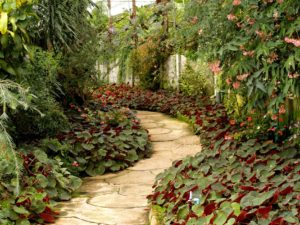E co-friendly or sustainable landscaping is a way to design, build, and preserve your landscape that saves time, funds, and energy. Green landscaping can help wildlife, cut down on atmosphere, soil, and water pollution, and provide healthy places to play and relax.
You may be wondering how is landscaping eco-friendly and what can you do to play your part? Well, you can create a change with your very own yard! A few fundamental habits may get you started on your journey, so read on.
First of All: Take a Look Around
You undoubtedly already have a lot to like about your yard; thus, expand on what you enjoy while tackling what you don't. As a first step, pay attention to which plants in your yard seem to flourish and which seem to demand excessive care but still don’t grow so well. See if there is evidence of water-related problems such as sedimentation or flood water after a severe downpour?
Prepare a Strategy
Decide on how you would like to dwell in your yard. Is it important to you to have a pleasant spot to rest, a playground for the kids, a place for entertaining, or a space to produce fruits and vegetables? Do you really want to spend a lot of time mowing the lawn?
If you have a basic plan, it might be as easy as having a few objectives you want to achieve. Make a general description of what you're doing or even an elaborate to-scale landscape design. Your strategy will serve as a foundation for beginning the process of transitioning to a more sustainable environment. As your experience grows and the environment changes, you'll want to adjust your plans.
Take It Slow And Easy
Create a new bed or enlarge an existing one. Treat a problem area by planting bushes or flowers in places where grass doesn't grow or by replacing invasive plants with more ecologically friendly alternatives to the plants that are already in situ. To cope with water runoff issues, create a rain garden.
You can learn from your achievements and mistakes more effectively if you start small and progress slowly. As a consequence, purchasing plants in smaller-sized pots saves money while also allowing them to establish themselves more quickly than purchasing a more mature plant.
Consider Planting a Tree
Trees provide a variety of environmental advantages. It is estimated that a single tree may store around 48 lbs. of Co2 each year. Trees also produce microclimates, which lower temperatures while increasing the amount of moisture in the air. Trees offer protection for birds and other wildlife too. Many insects use these plants as host plants, and many animals eat them.
An evergreen tree growing on the southern side of your home will gradually provide shade in the summer while allowing sunshine to pass through during the winter, lowering your energy bills for both heating and air conditioning. It is possible that they will also act as windbreaks along the western and northern boundaries of the land.
Smaller trees and shrubs may assist in filling in the gaps in garden beds while also providing an additional source of food and shelter for animals, as well as fruits for your own use, depending on your choices. The backbone of your landscape design is comprised of trees and shrubbery.
Avoid Plants That Cause Problems
A severe concern in our wildlife areas and parks is the presence of invasive species. Many of these plants, like English Ivy or Bradford Pears, have grown established in our landscapes. Invasive plants displace native plants that offer habitat and food for birds, animals, and other creatures, undermining the ecosystem's variety.
When choosing plants, you should also examine whether or not the plant is prone to disease or pests, as well as whether or not the plant will withstand adverse weather and wind conditions. For example, since cypresses have shallow roots, they may be driven askew or even uprooted as a consequence of strong winds or severe snowstorms.
There are a number of ways you can make sure the landscaping you do is eco-friendly. You can start from the backyard of your own home by making sure you’re planting the right plants and trees, not wasting resources, and not doing something that will be damaging in the long run, like using chemicals that are bad for the environment. Now that you know how is landscaping eco-friendly, get your gloves and gardening tools and have at it!





